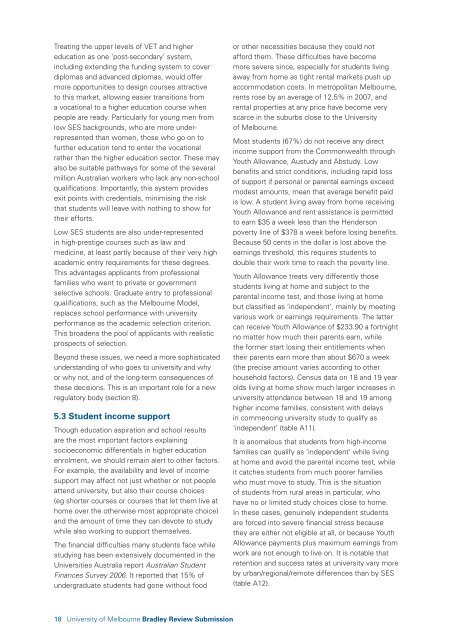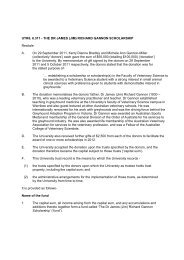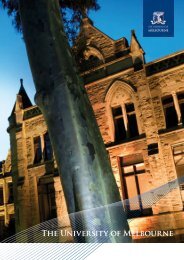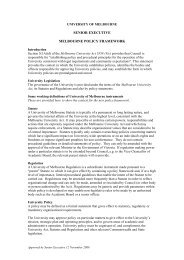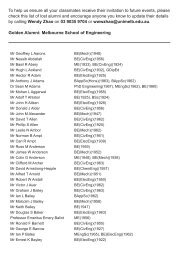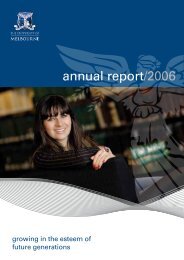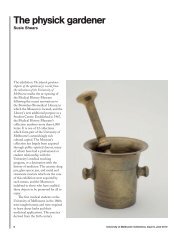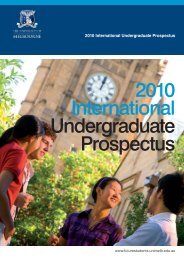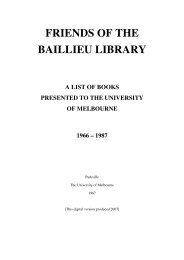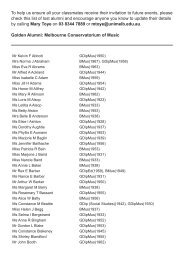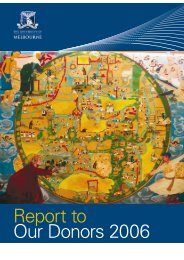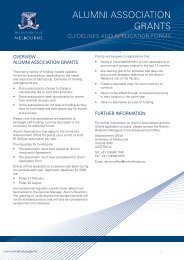Review of Australian Higher Education The Bradley Review
Review of Australian Higher Education The Bradley Review
Review of Australian Higher Education The Bradley Review
You also want an ePaper? Increase the reach of your titles
YUMPU automatically turns print PDFs into web optimized ePapers that Google loves.
Treating the upper levels <strong>of</strong> VET and higher<br />
education as one ‘post-secondary’ system,<br />
including extending the funding system to cover<br />
diplomas and advanced diplomas, would <strong>of</strong>fer<br />
more opportunities to design courses attractive<br />
to this market, allowing easier transitions from<br />
a vocational to a higher education course when<br />
people are ready. Particularly for young men from<br />
low SES backgrounds, who are more underrepresented<br />
than women, those who go on to<br />
further education tend to enter the vocational<br />
rather than the higher education sector. <strong>The</strong>se may<br />
also be suitable pathways for some <strong>of</strong> the several<br />
million <strong>Australian</strong> workers who lack any non-school<br />
qualifications. Importantly, this system provides<br />
exit points with credentials, minimising the risk<br />
that students will leave with nothing to show for<br />
their efforts.<br />
Low SES students are also under-represented<br />
in high-prestige courses such as law and<br />
medicine, at least partly because <strong>of</strong> their very high<br />
academic entry requirements for these degrees.<br />
This advantages applicants from pr<strong>of</strong>essional<br />
families who went to private or government<br />
selective schools. Graduate entry to pr<strong>of</strong>essional<br />
qualifications, such as the Melbourne Model,<br />
replaces school performance with university<br />
performance as the academic selection criterion.<br />
This broadens the pool <strong>of</strong> applicants with realistic<br />
prospects <strong>of</strong> selection.<br />
Beyond these issues, we need a more sophisticated<br />
understanding <strong>of</strong> who goes to university and why<br />
or why not, and <strong>of</strong> the long‐term consequences <strong>of</strong><br />
these decisions. This is an important role for a new<br />
regulatory body (section 8).<br />
5.3 Student income support<br />
Though education aspiration and school results<br />
are the most important factors explaining<br />
socioeconomic differentials in higher education<br />
enrolment, we should remain alert to other factors.<br />
For example, the availability and level <strong>of</strong> income<br />
support may affect not just whether or not people<br />
attend university, but also their course choices<br />
(eg shorter courses or courses that let them live at<br />
home over the otherwise most appropriate choice)<br />
and the amount <strong>of</strong> time they can devote to study<br />
while also working to support themselves.<br />
<strong>The</strong> financial difficulties many students face while<br />
studying has been extensively documented in the<br />
Universities Australia report <strong>Australian</strong> Student<br />
Finances Survey 2006. It reported that 15% <strong>of</strong><br />
undergraduate students had gone without food<br />
or other necessities because they could not<br />
afford them. <strong>The</strong>se difficulties have become<br />
more severe since, especially for students living<br />
away from home as tight rental markets push up<br />
accommodation costs. In metropolitan Melbourne,<br />
rents rose by an average <strong>of</strong> 12.5% in 2007, and<br />
rental properties at any price have become very<br />
scarce in the suburbs close to the University<br />
<strong>of</strong> Melbourne.<br />
Most students (67%) do not receive any direct<br />
income support from the Commonwealth through<br />
Youth Allowance, Austudy and Abstudy. Low<br />
benefits and strict conditions, including rapid loss<br />
<strong>of</strong> support if personal or parental earnings exceed<br />
modest amounts, mean that average benefit paid<br />
is low. A student living away from home receiving<br />
Youth Allowance and rent assistance is permitted<br />
to earn $35 a week less than the Henderson<br />
poverty line <strong>of</strong> $378 a week before losing benefits.<br />
Because 50 cents in the dollar is lost above the<br />
earnings threshold, this requires students to<br />
double their work time to reach the poverty line.<br />
Youth Allowance treats very differently those<br />
students living at home and subject to the<br />
parental income test, and those living at home<br />
but classified as ‘independent’, mainly by meeting<br />
various work or earnings requirements. <strong>The</strong> latter<br />
can receive Youth Allowance <strong>of</strong> $233.90 a fortnight<br />
no matter how much their parents earn, while<br />
the former start losing their entitlements when<br />
their parents earn more than about $670 a week<br />
(the precise amount varies according to other<br />
household factors). Census data on 18 and 19 year<br />
olds living at home show much larger increases in<br />
university attendance between 18 and 19 among<br />
higher income families, consistent with delays<br />
in commencing university study to qualify as<br />
‘independent’ (table A11).<br />
It is anomalous that students from high-income<br />
families can qualify as ‘independent’ while living<br />
at home and avoid the parental income test, while<br />
it catches students from much poorer families<br />
who must move to study. This is the situation<br />
<strong>of</strong> students from rural areas in particular, who<br />
have no or limited study choices close to home.<br />
In these cases, genuinely independent students<br />
are forced into severe financial stress because<br />
they are either not eligible at all, or because Youth<br />
Allowance payments plus maximum earnings from<br />
work are not enough to live on. It is notable that<br />
retention and success rates at university vary more<br />
by urban/regional/remote differences than by SES<br />
(table A12).<br />
18 University <strong>of</strong> Melbourne <strong>Bradley</strong> <strong>Review</strong> Submission


